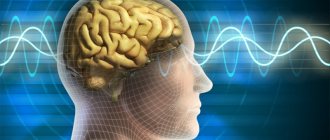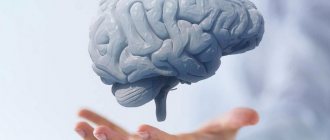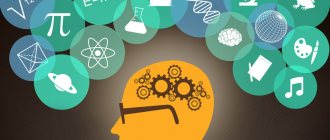Mnemonics (mnemonics techniques) are special methods of memorizing certain types of information, based on the peculiarities of human psychology, as well as on the four rules of memorization that were given in previous lessons. Knowledge and use of special mnemonics will allow you to better remember digital information, specific texts and terms, names, faces and surnames, foreign words, expressions and much more.
This lesson will cover the basics of mnemonics, and also describe the basic techniques and methods for memorizing various types of information.
Games for memory development
What could be more enjoyable than games, right? And if these games are interesting, if they develop and train memory, then this is generally a fairy tale. The excitement, points earned and the result growing after almost every game will help you train with great interest and without stopping.
Memory matrix game
The memory matrix game is a great memory trainer. A field with filled-in cells will be shown on the screen.
The essence of the game is to remember the location of the cells in the allotted time and then reproduce their places. The difficulty will gradually increase by expanding the field.
Ready to test your memory? How far can you go? Or maybe you'll be eliminated before the end of the game? Let's check...
Play now
Game "Memorize and call"
The game “Memorize and Call” develops memory and attention. The essence of the game is to remember the numbers in the table and click on them as they increase.
In this game, a table with numbers is given, first the numbers are shown on the screen, you need to remember them, then the numbers are covered. Remember where the smallest number is located and click on that cell, then click on the cell where the next number goes.
Can you beat the main record of this game? Let's check!
Play now
Game "Number Reach"
The number span game will challenge your memory while practicing this exercise.
The essence of the game is to remember the number, which takes about three seconds to remember. Then you need to play it back. As you progress through the stages of the game, the number of numbers increases, starting with two and further.
Play now
Game “Numerical Reach – Revolution”
The Number Reach Revolution game is similar to the previous one, but is a more challenging version. The numbers are displayed on the screen one at a time (as in the picture below), and much less time is given for memorization.
Your goal is to list the numbers that were demonstrated in the correct order.
The more stages of the game you complete, the more difficult it will be to play. I recommend this memory trainer.
Play now
Game "Super Memory"
In the “super memory” game you will need to strain your memory like nowhere else. Pictures will appear in the background. One for each stage.
Your goal is to find a new picture that appears. After you have found a new picture, the field is covered with a red background and a new picture appears under it, then the background is removed and you need to find the picture.
Be careful and remember all the pictures, because they may appear nearby or even similar.
Ready for a workout? Then go ahead!
Play now
Brainfood game
A great exercise for developing memory is the brainfood game, and gaining points and speed of completion will make it more difficult!
The essence of the exercise is that a set of pictures is displayed on the monitor, you select one of them, then a new set is displayed, but you cannot select a picture a second time, and you select a new one again. Remember that you cannot repeat yourself and after several stages, you will have to think hard and remember which pictures were chosen so as not to make a mistake.
Good game and interesting memory development! Shall we play?
Play now
Spatial Speed Comparison Game
The spatial speed comparison game trains memory and attention at the same time. Due to the fact that there is a time limit, the game becomes more complicated.
The essence of the game is to give a “yes” or “no” answer to the question “does the figure match the previous one?” And after each answer the figure will change.
An interesting and educational game that will leave its mark on your development, the main thing is that you play hard.
Play now
Game "Pathfinder"
The game "pathfinder" affects memory and attention. The essence of the game is to remember the order in which animal tracks appear. At first the game starts with two tracks, but then there are more!
Pay close attention to the tasks: “indicate the order in which the traces appear,” “click on the trace opposite the order in which they appear.”
Be careful, strain your memory and attention and play!
Play now
Game "3 back"
A very difficult game "3 back" will force you to give it your all and strain your memory.
The essence of the game is that four numbers are shown on the screen, and with each answer to the question, they shift to the left by 1. The question is: “Does the card on the right match the one that was shown on the left 2 cards ago?”
You will need to work hard during this exercise because memorizing is really difficult. Are you ready for memory training? Then let's go!
Play now
Game "Find a coin"
The game “find a coin” contributes to the development of memory. The essence of the game is to find coins in each house in order.
If you did not find a coin in the first house, then click on the second and then again on the first. Why is that? You cannot double-click on a house that contains a coin, but if the first time there was no coin, then select another house, and then a coin may also appear in the first one.
You will be required to remember in which house the coin was found and in which house it was not, so as not to lose.
Play now
Development of memory and attention in a child 5-10 years old
The purpose of the course: to develop the child’s memory and attention so that it is easier for him to study at school, so that he can remember better.
After completing the course, the child will be able to:
- 2-5 times better to remember texts, faces, numbers, words
- Learn to remember for a longer period of time
- The speed of recalling the necessary information will increase
Sign up for a courseRead more
Mnemonics
In two words, mnemonics is the art of memorization. Mnemonics are techniques and methods of memorization.
Some effective methods have been known to you since childhood. Acrostic method helps the student remember the colors of the rainbow once and for all. Every Hunter Wants to Know Where the Pheasant Sits. The first letter of each word in this nursery rhyme is the same letter as the color of the rainbow. And everyone knows that the rainbow has seven colors: red, orange, yellow, green, blue, indigo, violet.
Using this technique, our ancestors learned the letters of the alphabet. Now this verse is not used, because the letters are already called differently.
Mnemonic phrases help you remember the rules of syntax: putting on clothes, putting on Nadezhda. I can't bear to get married.
A bisector is a rat that runs around the corners and divides the corner in half. These nursery rhymes will help us understand how mnemonics work.
In order to remember well, mnemonics experts advise using a system of images or associations . This is how Einstein's name is associated with physics. The name Ivan sounds similar to sofa. The number eleven is similar in appearance to drumsticks and Chinese chopsticks. Love is associated with the heart.
The story writing method helps you remember unrelated words. Eg:
- A pineapple;
- Drum;
- Crocodile;
- Fan;
- Brick.
Let's come up with a funny story about how a pineapple played a drum, the crocodile didn't like it, he ran towards the drum, but the fan blew him out of the way, and the crocodile hit a brick.
Moreover, the more crazy the story, the sooner it will be remembered.
Very close to this technique is Chain .
It involves putting images in a chain in your mind. The pineapple is holding a drum, the crocodile is biting the drum, a fan is hanging on its tail, and a brick is lying at the foot of the fan.
Super memory in 30 days
Remember the necessary information quickly and for a long time. Wondering how to open a door or wash your hair? I’m sure not, because this is part of our life. Easy and simple exercises for memory training can be made part of your life and done a little during the day. If you eat the daily amount of food at once, or you can eat in portions throughout the day.
Sign up for a courseRead more
How to improve memory and develop attention
Free practical lesson from advance.
Sign up for freeRead more
How to remember lists
The techniques described help you remember lists. We sometimes have to take a long list of groceries with us to the store, which is awkward to hold in our hands and difficult to remember.
The list of necessary things for the trip and the performance plan also look like a list. People also like to remember anecdotes and stories, tricks. You can remember useful information in the form of lists.
It is more convenient to remember all this using mnemonics.
This technique allows you to remember lists for a short time.
Let's remember the first ten words by what they look like:
- Pillar, lantern;
- Swan;
- Butt, ear;
- Upside down chair, flag;
- Hook;
- Cherry;
- Poker, stick;
- Woman, guitar;
- Balloon;
- Golf.
The second ten – by sound:
- Order, God One;
- Creature;
- Trio;
- Crap;
- Heel;
- Pole;
- Seeds;
- Wasps;
- Virgo;
- Despot.
We need to remember the list:
- Fur coat;
- Beet;
- Herring;
- Potato;
- Bike;
- Sausage;
- Candies;
- Soda;
- Jam;
- Milk.
To remember these words, let’s imagine a fur coat hanging on a lantern, a beet in a swan’s beak, a herring slapping its butt, a potato sitting on a chair, a bicycle with a hook in the tire. And for each word you need to come up with your own crazy story connecting it with numbers from 1-10.
Secrets of brain fitness, training memory, attention, thinking, counting
The brain, like the body, needs fitness. Physical exercise strengthens the body, mental exercise develops the brain. 30 days of useful exercises and educational games to develop memory, concentration, intelligence and speed reading will strengthen the brain, turning it into a tough nut to crack.
Sign up for a courseRead more
The best books on mnemonics
Arthur Dumchev “Remember everything. A practical guide to memory development"
This book contains examples of exercises in different ways to develop quick memorization. Arthur memorized the number Pi up to 22529 digits.
Using the author's advice, readers learn to find solutions to complex problems in their minds and operate with long digital chains. Intelligence moves to a new level.
Prices for Dumchev Arthur Remember everything. A practical guide to memory development
Find out more about the book
Roger Sipe, Brain Development. How to read faster, remember better and achieve greater goals"
The collection of the famous author, teacher of strategies and tactics of self-development, presents a number of innovations and methods for better memorization and quick reading.
Roger Sipe Prices Brain Development. How to Read Faster, Remember Better, and Achieve Bigger Goals
Find out more about the book
Joshua Foer Einstein Walks on the Moon. The Science and Art of Memory"
The book tells the story of the period of time that the author spent studying his own memory abilities. For a whole year he revealed internal potentials, hidden mechanisms, protective nuances and trained.
Speed reading in 30 days
Increase your reading speed by 2-3 times in 30 days. From 150-200 to 300-600 words per minute or from 400 to 800-1200 words per minute. The course uses traditional exercises for the development of speed reading, techniques that speed up brain function, methods for progressively increasing reading speed, the psychology of speed reading and questions from course participants. Suitable for children and adults reading up to 5000 words per minute.
Sign up for a courseFree lesson
Mnemonics methods for memorizing texts
Cicero, going to his next public performance, always followed the same road. The road was familiar to him, from bush to pebble. The key words with which the blocks into which Cicero divided the texts began, he pronounced in his mind in those places that he remembered along the route.
To memorize texts, learn the route you take every day to work or school. Keywords should be associated with points on the road that you remember by heart. It is good to divide the text into paragraphs or chapters, small parts. Then you will be able to surprise your friends and teachers by reciting the text without errors.
We speed up mental arithmetic, NOT mental arithmetic
Learn to quickly and correctly add, subtract, multiply, divide, square numbers, and even extract roots. I will teach you how to use easy techniques to simplify arithmetic operations. Each lesson contains new techniques, clear examples and useful tasks.
Sign up for a courseRead more
For different ages
For preschoolers
Mnemonics are actively used by educators and speech therapists for the development of speech in kindergarten with the help of mnemonic squares and mnemonic tracks. First, the child must name what is shown in the picture (visual associations are triggered and at the same time the vocabulary is replenished). Then he composes sentences and entire stories using several illustrations at once (the grammatical speech is enriched). The most complex one in this chain is the mnemonic table, which helps a preschooler learn a full-fledged poem.
For school age children
The education system is the most fertile field for the use of mnemonics. In order to assimilate huge amounts of information on various subjects, consonance and rhyme will be useful for developing the memory of schoolchildren, examples of which are in the tables above. Starting from the age of 10, experts advise parents and teachers to gradually teach children the methods of Cicero and Aivazovsky. You can also use other exercises: creating your own language, developing cuneiform, password recall and others.
For adults
For the development of memory for adults, it is already too late to learn poetry in order to remember the sequence of cases in the Russian language. They need more complex techniques, working with numbers, visual and auditory detail of what is happening. The pinnacle of perfection will be mastering the Giordano system or at least trying to take part in the correspondence round of the mnemonics competition.
Money and the Millionaire Mindset
Why are there problems with money? In this course we will answer this question in detail, look deep into the problem, and consider our relationship with money from psychological, economic and emotional points of view. From the course you will learn what you need to do to solve all your financial problems, start saving money and invest it in the future.
Knowledge of the psychology of money and how to work with it makes a person a millionaire. 80% of people take out more loans as their income increases, becoming even poorer. On the other hand, self-made millionaires will earn millions again in 3-5 years if they start from scratch. This course teaches you how to properly distribute income and reduce expenses, motivates you to study and achieve goals, teaches you how to invest money and recognize a scam.
Sign up for a courseRead more
Mnemonics exercises for beginners
Advice for beginning audiences: stay calm. To learn new information, you must remain calm. This is necessary so that unnecessary emotions and anxiety do not get mixed up with the associations that you build in your head for coding. In addition, it will be difficult to understand for yourself which method suits you best.
It is useful for a beginner to understand the principles of mnemonics and choose appropriate techniques. It has been noticed that it is more difficult to remember isolated objects and unrelated numbers. It is easier to remember the connections between objects. It is good to connect already known information with new information.
It is easier to remember logical, figurative, emotional, vivid associations, rather than the objects themselves. Through these connections, information is easier to find in memory and reproduce.
If there are no such connections, they need to be created. This is the essence of memorization in mnemonics.
Mnemonics works as follows:
- abstract data is taken;
- connections are created between them - coding occurs;
- memorization, repetition in a convenient form;
- decoding, decoding;
- reproduction of the necessary data that needed to be remembered.
This is the sequence in which data is processed. Beginners should not be intimidated by this seemingly complex process. If you practically start applying the advice of the masters, it turns out that it is not as difficult as it seems.
Mnemonics allows beginners to use those images and associations that are closer to them, and it is easier to retain them in memory.
Reception "Matryoshka"
Here the images are “nested” into each other, as in a famous toy. The second method of connecting images is used here. We remember the juice and bread that is attached to the lid of the drink package.
The advantages of this technique are the following:
- Each of the images is free; others can be attached to them, which allows you to group information according to meaning. This technique allows you to remember, for example, a detailed plan.
- Information is remembered in a structured manner, and images are formed more qualitatively. Why? Because we attach a new image to a detail of the old one. And we remember that images must be detailed.
Each image, on the details of which others are written, represents an information block.
Creating reference image systems
By combining the methods of memorizing a sequence described above, you can create a system of reference images. If you use it, it must be created in advance. And first it needs to be carefully secured as described above. In principle, they themselves will become well established in memory if you use them. According to the knowledge acquisition pyramid, 90% of information is remembered through actions. That is, if we do something with the acquired knowledge, it is least forgotten.
In general, all mnemonics, and systems of support images in particular, are needed in order to use information, albeit in symbolic form. It is due to this that almost one hundred percent efficiency is ensured.
Let's consider several ways to form reference image systems:
- The simplest system of reference images is objects that are identified by Cicero’s method. Remember, we gave as an example a stop, a flower stall, two crossings? You may have your own images that come across on the road. It is recommended to create 100 images if you have to actively remember information. But for starters, 10-15 is enough.
- Cicero's method + highlighting parts of the image. The second concept is unfamiliar to you, but we already looked at it today. Highlighting parts of the image is the example with the juice cap that we gave. Here the sequence of actions is simple. First, we select the required number of images using Cicero’s method, and then in each of them we find five more details, which can also be used as reference ones. For example, imagine an open refrigerator. In this case, the parts will be the following - door, top, middle, bottom shelves, freezer. If you have identified 100 objects using Cicero’s method, then in this way you can create a system of 500 reference images.
- Everything described above, plus a short chain of 5 arbitrary images connected to each of the “Chain” support methods. In this case, you get 12,500 reference images that can be used to remember information. Essentially, you have an internal file system in your head.
We advise you to approach the creation of a system of reference images creatively. For example, the entire system can be divided into three blocks. The first is used to demonstrate memory tricks, the second is used to remember precise information that can be useful in everyday life (telephone numbers, for example), and the third is used to memorize educational material.
Once information has been recorded on the reference image, new information cannot be written.
Causes of weak memory
The modern rhythm of life negatively affects the functioning of the brain.
The causes of poor memory are due to the following factors:
- sleep problems (insomnia, systematic lack of sleep);
- consumption of alcoholic beverages, drugs and smoking tobacco products;
- use of painkillers and antidepressants;
- lack of one or more vitamins in the body;
- damage to the bones of the skull or soft tissues (nerves, blood vessels, brain tissue and membranes);
- tumors of the glandular tissue of the pituitary gland;
- malignant tumors (cancer);
- an infectious disease caused by Mycobacterium tuberculosis;
- extensive liver damage (cirrhosis);
- renal or liver failure;
- chronic fatigue;
- information overload of the brain;
- disease of the central nervous system - Alzheimer's disease;
- multiple sclerosis;
- Parkinson's disease;
- diabetes;
- cerebral circulatory disorders, which is usually associated with atherosclerosis;
- suffered a stroke;
- a disease of the spine that affects the intervertebral discs and the vertebral tissues themselves - osteochondrosis;
- anemia;
- Down syndrome;
- disruption of metabolic processes in the body;
- asthenic syndrome;
- problems with visual functions;
- constant stressful situations;
- frequent damage to the body by viral infections;
- hormonal imbalance;
- epilepsy;
- schizophrenia;
- vascular damage to the brain that develops slowly - discirculatory encephalopathy;
- vegetative-vascular dystonia;
- dysmnesia and paramnesia – changes in memory, distortion of memories;
- vertebrobasilar arterial system syndrome;
- persistently elevated blood pressure.
Diet for memory
It's no secret that many chemicals enhance memory, while others weaken it. Here is a list of those and other substances. Memory is strengthened by foods rich in magnesium, calcium and glutamic acid (dried apricots, beets, dates, nuts, beans, greens, wheat sprouts), as well as tea and coffee containing caffeine. But! There is a type of people whom coffee makes them sleepy. You can check this by your reaction to the fourth or fifth cup of coffee in your life (the first ones are not indicative).
Nothing can be changed in this area; all that remains is to come to terms with fate. Memory is weakened and destroyed by atropine, scopolamine, nicotine (this one even activates mental activity at first with each use, but in general the memory gradually weakens from it) and alcohol.
Practice visualization
The technique will allow you to remember numbers and names well. To do this, you need to figuratively, in detail, imagine the information being remembered.
Example:
You need to remember the name. Imagine each of its letters: they are covered with ivy, some have flowers growing on them, and so on. How many letters are there in total? Recalculate. Which one is the first? What is the second one like, what does it look like? As a result, you will be able to break information down into components and remember each one. And when the brain receives a request on this topic, it will simply put together the puzzle.
Image overlay
The essence of this method of memorizing information is to create connections. They allow one image to be superimposed on another by using connections between the stimulus and the memorized material. This mnemonic technique is a method and technique for beginners, adults and children. It is suitable for learning a foreign language. By superimposing visual and acoustic images, a strong connection is created.
For example, when learning English, you need to remember the word trolley bus. Imagine a troll on a bus. This is the superposition of one image on another. A connection is formed in the mind between visual images, which are stimuli for memorization (troll and bus) and acoustic ones. When learning languages, you can come up with all sorts of overlays.
Rhyme
At school we were taught to memorize not long complex rules, but short rhythmic rhymes. This also works in adulthood. If you can’t rhyme the information you need, you can select lines and phrases rhythmically, and also combine them with the motive of your favorite song.
The technique is suitable if you need to remember a sequence of numbers that are not related to each other (for example, the number of a bank card or a friend’s car, a telephone number or a combination for an intercom).
Example:
We need to remember the phone number 151-46-63. The last number is three, so you need to find a rhyme for it, for example, “speak.” The result will be a rhyme like this:
“One, five, one, four, six, six, three. Do not tell anybody".
Come up with associations
If you have well-developed imaginative thinking, this technique will be the most effective and interesting. It consists of coming up with an association between several words, objects or facts that, at first glance, have nothing in common with each other. Use your imagination, because the association can and should be unusual and even absurd - this way you will better remember the necessary information.
Here you can use images of relatives, singers, actors, artists, directors and all those who are firmly entrenched in our minds.
Example:
You just can’t remember the name of your new neighbor in the country. Outwardly, he reminds you of your cousin and has the same name. Come up with and remember the following association: “This neighbor is like a brother to me.” Next time, your brain itself will give you the name you need through association - it will be enough just to think about your brother when you meet your neighbor again.











